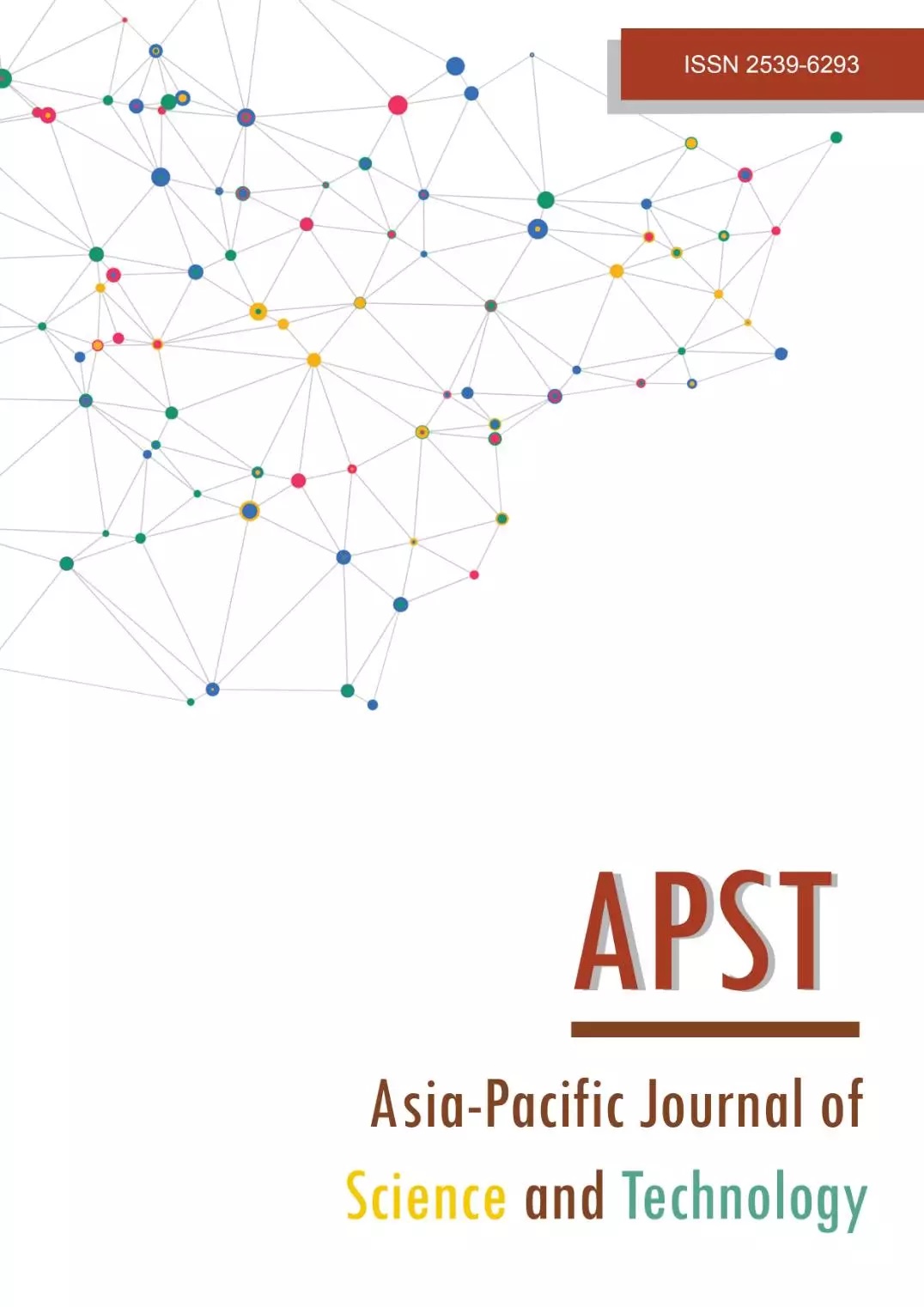Comparative evaluation of Tc-99m DTPA and Tc-99m MAG3 post-transplant renal scintigraphy for predicting one-year renal function in kidney transplant recipients
Main Article Content
Abstract
This study aimed to compare renal scintigraphy (RS) using Tc-99m DTPA and Tc-99m MAG3 for predicting suboptimal renal function 1-year after kidney transplantation (KT) and correlation with renal function. This retrospective study included patients who underwent Tc-99m DTPA and Tc-99m MAG3 RS within 30 days after KT. Patients with serum creatinine at 1-year of ≤1.5 mg/dL and >1.5 mg/dL were classified as having good and suboptimal renal function, respectively. Area under receiver operating characteristic curve (AUCROC) was used to determine predictiveness of RS parameters in predicting suboptimal renal function. Spearman’s correlation was used to determine correlation between RS parameters and estimated glomerular filtration rate (eGFR). Of 227 patients, mean age was 42±10.5 years, 61.2% were males, 94.3% underwent deceased-donor KT. 56 patients (24.7%) had suboptimal 1-year renal function. The highest AUCROC is 0.71 for effective renal plasma flow rate from Tc-99m MAG3 RS but no significant differences in AUCROC between parameters from Tc-99m DTPA RS vs. Tc-99m MAG3 RS were found. Three parameters including time to peak, 20-min to peak ratio, and 20-min to 3-min, when obtained from Tc-99m MAG3 RS, had significant negative correlation with eGFR at 1-year (r: -0.18, -0.25, and -0.24, respectively) while those obtained from Tc-99m DTPA RS had no correlation. Tc-99m DTPA and Tc-99m MAG3 RS had no significant difference in predicting 1-year suboptimal post-KT renal function. However, time to peak, 20-min to peak ratio, 20-min to 3-min ratio were better correlated with eGFR when obtained from Tc-99m MAG3 RS.
Article Details

This work is licensed under a Creative Commons Attribution-NonCommercial-NoDerivatives 4.0 International License.
References
Hill NR, Fatoba ST, Oke JL, Hirst JA, O’Callaghan CA, Lasserson DS, et al. Global prevalence of chronic kidney disease – a systematic review and meta-analysis. PLoS ONE. 2016;11(7):e0158765.
Garcia GG, Harden P, Chapman J, World Kidney Day Steering Committee 2012. The global role of kidney transplantation. Curr Opin Organ Transplant. 2012;17(4):362-367.
Coemans M, Süsal C, Döhler B, Anglicheau D, Giral M, Bestard O, et al. Analyses of the short- and long-term graft survival after kidney transplantation in Europe between 1986 and 2015. Kidney Int. 2018;94(5):964-973.
Hellegering J, Visser J, Kloke HJ, D’Ancona FCH, Hoitsma AJ, van der Vliet JA, et al. Poor early graft function impairs long-term outcome in living donor kidney transplantation. World J Urol. 2013;31(4):901-906.
Kyllönen LE, Salmela KT, Eklund BH, Halme LE, Höckerstedt KA, Isoniemi HM, et al. Long-term results of 1047 cadaveric kidney transplantations with special emphasis on initial graft function and rejection. Transpl Int. 2000;13(2):122-128.
Nemati E, Einollahi B, Lesan Pezeshki M, Porfarziani V, Fattahi MR. Does kidney transplantation with deceased or living donor affect graft survival? Nephrourol Mon. 2014;6(4):e12182.
Siddiqi N, McBride MA, Hariharan S. Similar risk profiles for post-transplant renal dysfunction and long-term graft failure: UNOS/OPTN database analysis. Kidney Int. 2004;65(5):1906-1913.
Rutland MD. A comprehensive analysis of renal DTPA studies. II. Renal transplant evaluation. Nucl Med Commun. 1985;6(1):21-30.
Sampson WF, Macleod MA, Warren D. External monitoring of kidney transplant function using Tc-99m(Sn)DTPA. J Nucl Med. 1981;22(5):411-416.
Heaf JG, Iversen J. Uses and limitations of renal scintigraphy in renal transplantation monitoring. Eur J Nucl Med. 2000;27(7):871-879.
Yazici B, Oral A, Gokalp C, Akgün A, Toz H, Ozbek SS, et al. Evaluation of renal transplant scintigraphy and resistance index performed within 2 days after transplantation in predicting long-term graft function. Clin Nucl Med. 2015;40(7):548-552.
Levey AS, Stevens LA, Schmid CH, Zhang Y, Castro AF, Feldman HI, et al. A new equation to estimate glomerular filtration rate. Ann Intern Med. 2009;150(9):604-612.
R Core Team [Internet]. R: a language and environment for statistical Computing. Vienna: R Foundation for Statistical Computing; 2020 [cited 2020 Jun 1]. Available from: https://www.R-project.org/.
Robin X, Turck N, Hainard A, Tiberti N, Lisacek F, Sanchez JC, et al. pROC: an open-source package for R and S+ to analyze and compare ROC curves. BMC Bioinformatics. 2011;12:77.
Wickham H. ggplot2: Elegant Graphics for Data Analysis [Internet]. New York: Springer-Verlag New; 2016 [cited 2020 Jun 10]. Available from: https://ggplot2.tidyverse.org.
Park UJ, Kim HT, Cho WH, Kim MY, Hwang EA, Han SY, et al. Use of early postoperative MAG3 renal scan to predict long-term outcomes of renal transplants. Exp Clin Transpl. 2013;11(2):118-121.
Tulchinsky M, Dietrich TJ, Eggli DF, Yang HC. Technetium-99m-MAG3 scintigraphy in acute renal failure after transplantation: a marker of viability and prognosis. J Nucl Med. 1997;38(3):475-478.
Aktaş A, Aras M, Colak T, Gençoğlu A, Karakayali H. Comparison of Tc-99m DTPA and Tc-99m MAG3 perfusion time-activity curves in patients with renal allograft dysfunction. Transplant Proc. 2006;38(2):449-453.
Hilson AJ. The renal transplant perfusion index: where are we now? Eur J Nucl Med. 1991;18(4):227-228.
Gates GF. Glomerular filtration rate: estimation from fractional renal accumulation of 99mTc-DTPA (stannous). Am J Roentgenol. 1982;138(3):565-570.
Fine EJ, Axelrod M, Gorkin J, Saleemi K, Blaufox MD. Measurement of effective renal plasma flow: a comparison of methods. J Nucl Med. 1987;28(9):1393-400.
Mehta RB, Tandukar S, Jorgensen D, Randhawa P, Sood P, Puttarajappa C, et al. Early subclinical tubulitis and interstitial inflammation in kidney transplantation have adverse clinical implications. Kidney Int. 2020;98(2):436-447.


